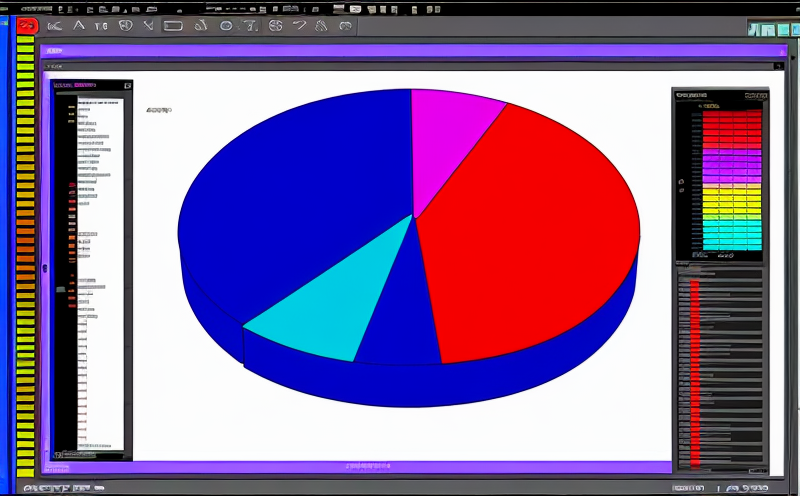USP 891 Thermal Analysis of Pharmaceuticals by DSC
The United States Pharmacopeia (USP) Chapter Chapter 891, titled “Differential Scanning Calorimetry” provides a standardized approach for the thermal analysis of pharmaceuticals. This method is critical in ensuring quality, safety, and efficacy by quantifying heat effects that occur during heating or cooling processes.
The Differential Scanning Calorimeter (DSC) measures the temperature difference between a sample and a reference material as they both are heated or cooled at a constant rate. The primary focus of USP 891 is on the identification, characterization, and quantification of phase transitions, thermal stability, and enthalpy changes in pharmaceuticals. These measurements provide valuable insights into the physical properties of materials, which can be indicative of their purity, molecular structure, and potential for degradation.
The DSC technique is particularly useful during development phases as it allows researchers to understand how a material behaves under various temperature conditions before formulation. It helps in determining optimal processing parameters that minimize thermal stress and maximize product stability. Additionally, this method can be instrumental in identifying impurities or adulterants by comparing the heat signature of an unknown sample with known standards.
The testing process typically involves careful preparation of the sample, ensuring it is representative of the batch being tested. The sample should be homogeneous and free from contaminants that could skew results. Once prepared, the sample is placed in a suitable DSC pan and subjected to heating or cooling at a controlled rate. During this process, any thermal events such as melting points, glass transition temperatures (Tg), crystallization, decomposition, etc., are captured as peaks on the DSC curve.
The accuracy of these measurements depends heavily on precise calibration of the instrument and standard operating procedures that adhere strictly to USP guidelines. Compliance with these standards ensures reliability and reproducibility across different laboratories. The results from such analyses play a crucial role in drug development, quality control, and regulatory submissions.
Understanding the thermal behavior of pharmaceuticals is not only essential for manufacturing but also vital for storage conditions and shelf-life determinations. By leveraging USP 891 methods, manufacturers can optimize production processes to enhance product stability while adhering to stringent quality standards set forth by regulatory bodies worldwide.
Why It Matters
The importance of thermal analysis in pharmaceuticals cannot be overstated. This technique offers a non-destructive means of assessing the physical and chemical properties of materials, which are crucial for drug development and manufacturing processes.
- Purity Assessment: Identifying impurities or adulterants by comparing unknown samples against known standards.
- Melting Point Determination: Establishing critical process temperatures necessary for successful manufacturing.
- Phase Transitions: Understanding the behavior of materials during processing and storage conditions.
- Thermal Stability: Ensuring stability under various environmental factors, which influences shelf life.
The insights gained from thermal analysis are pivotal in ensuring that pharmaceutical products meet high safety standards. This approach supports compliance with international regulations such as the USP itself, thereby enhancing patient confidence and trust.
In essence, thermal analysis by DSC is more than just a laboratory tool; it is an integral part of ensuring the quality, efficacy, and safety of pharmaceuticals throughout their lifecycle from research to final product.
Competitive Advantage and Market Impact
Adopting USP 891 thermal analysis by DSC can confer significant competitive advantages in the pharmaceutical market. By providing robust data on product stability, manufacturers can optimize production processes to enhance efficiency and reduce costs. This strategic use of technology ensures that products meet stringent quality standards, thereby gaining a foothold in both domestic and international markets.
- Innovation: Early identification of potential issues during development stages allows for faster innovation cycles.
- Regulatory Compliance: Ensures adherence to global regulatory requirements, opening doors to broader market access.
- Patient Trust: Demonstrating commitment to quality and safety builds consumer trust, which is crucial in the pharmaceutical industry.
The use of advanced thermal analysis techniques also differentiates companies from competitors by showcasing their commitment to cutting-edge technology and rigorous quality assurance practices. In an increasingly competitive landscape, these advantages can translate into market leadership and increased customer loyalty.
Moreover, compliance with USP standards enhances brand reputation, making it easier for companies to establish long-term relationships with partners and clients. This strategic approach not only supports current business objectives but also positions organizations as leaders in their field, paving the way for future growth opportunities.
Use Cases and Application Examples
The application of USP 891 thermal analysis by DSC spans multiple areas within the pharmaceutical industry. One key use case involves the evaluation of excipients, which are substances used in drug formulations to improve stability or ease administration.
- Excipient Testing: Assessing the compatibility and stability of excipients under various temperature conditions helps ensure they do not interact adversely with active ingredients.
- Drug Formulation Optimization: By understanding how different components behave thermally, researchers can fine-tune formulations to achieve desired properties like solubility or dissolution rate.
- Stability Studies: Monitoring the thermal stability of drug products over time aids in determining appropriate storage conditions and shelf life.
In addition to these applications, USP 891 methods are also employed during quality control audits and batch release testing. During these processes, samples undergo rigorous evaluation to confirm compliance with established specifications before being released into the market.
Another critical application involves pharmaceutical development where new compounds must be thoroughly characterized before clinical trials begin. Through thorough thermal analysis, scientists gain valuable information about the physical behavior of novel drugs during heating and cooling cycles.
Finally, regulatory submissions often require extensive data on product characteristics to support approval applications. In this context, USP 891 provides comprehensive information that strengthens arguments for favorable outcomes from review agencies.





